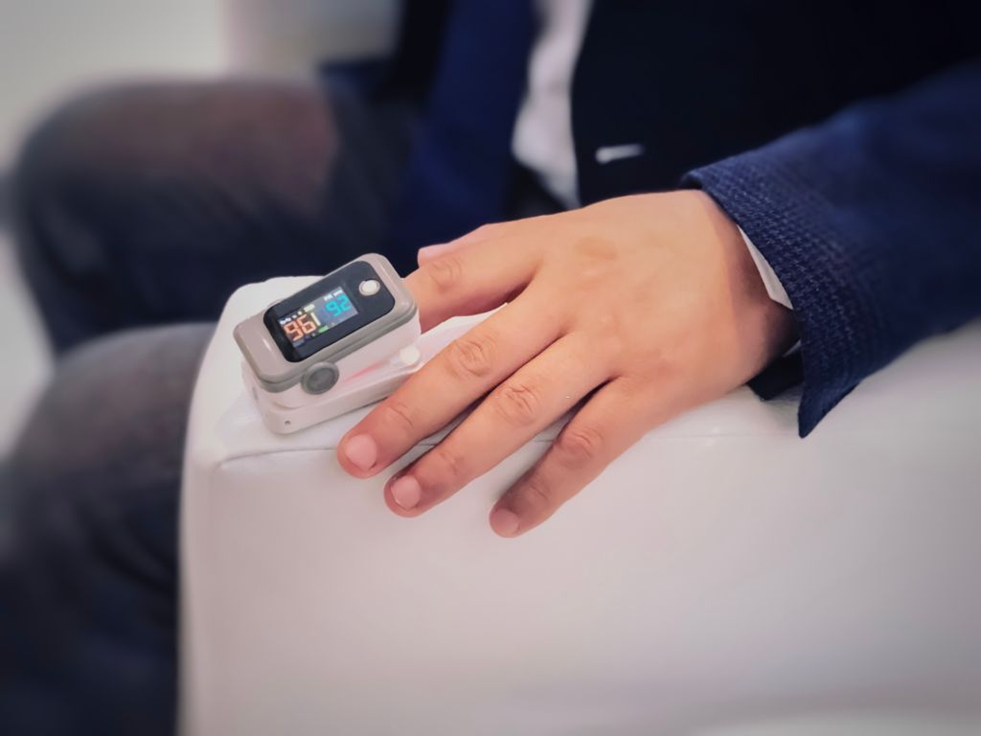Pulse oximeters are small, clip-like devices that are used to measure light absorption by attaching them to a part of the body like the earlobe, finger or toes. They are however most usually attached to a finger. They noninvasively and painlessly monitor a person’s oxygen saturation (SO2) that is, how much of the hemoglobin in the blood is carrying oxygen and also measure pulse rate. The measure of a person’s oxygen saturation is referred to as pulse oximetry.
Pulse oximeters are used in critical care settings like hospital operating rooms, wards, emergency rooms, and ambulances while some pulmonologists may use them in the office. They are common because they are noninvasive, compact, cheap to buy and can easily detect hypoxemia early. This article will hopefully help you answer some of your questions such as what is a pulse oximeter, what do they measure and which one do you need?
The purpose of using this device in measuring a person’s oxygen saturation is to check how well the heart is pumping oxygen through the body. It is especially useful in monitoring people with any type of health conditions that may affect the oxygen levels in the blood most especially while in the hospital. These health conditions might include
- Asthma
- Pneumonia
- Lung cancer
- Chronic obstructive pulmonary disease (COPD)
- Heart attend and heart failures.
Some common uses of pulse oximeters include:
- Monitoring oxygen levels during or after a surgery that requires the patient to be sedated.
- Accessing how well a lung medication is working.
- Evaluating how helpful a ventilator is.
- Evaluating if a person needs help in breathing.
- Confirming how effective supplemental oxygen therapy is.
- Checking the tolerance level of a person’s ability to increase physical activity and
- Evaluating breathing patterns to know if a person’s breathing stops during a sleep study. You can read about pulse oximetry here.

How a Pulse Oximeter Works
During a pulse oximetry reading, a pulse oximeter is attached to a finger, a toe or the earlobe. Small beams of light from the device shine through a transparent area of the skin and pass through the blood to a detector positioned on the other side of the skin. One side of the device shines the light while the other part detects it. During this process, the device measures the amount of oxygen in the hemoglobin. This is done by the oximeter measuring the changes in the absorption of light in oxygenated or deoxygenated blood. With this, it will be able to tell the oxygen saturation and heart rate.
The device uses an equation and other data to estimate the exact level of oxygen saturation. It does not directly measure it but simply makes it calculations by taking advantage of the fact that oxyhemoglobin and deoxyhemoglobin absorb light of different wavelengths in specific ways.
In summary, the absorbance of light is dependent on.
- The concentration of the light-absorbing substance.
- The length of the path light will travel in the absorbing substance.
- The amount of oxyhemoglobin and deoxyhemoglobin which each absorb light (red and infrared) in different ways.
All these factors are what will enable the pulse oximeter calculate the oxygen saturation level.
Most oximetry readings are typically fairly accurate. Results usually have at most a 2 percent error margin of the actual measurement. That is if the reading is 90, the true saturation level will be anywhere between 88 to 92. This is especially true when equipment of high quality is used. Some factors that might affect the reading include movement, temperature, bilirubin levels, and even nail polish.
An oxygen saturation level of 89 percent or greater is needed to keep the body healthy while a reading of 95 percent is the normal saturation level for most healthy people. If it is lower than this for a brief period, it is not considered dangerous. If however it is consistently low, then it could be damaging. See more on how the device works here: https://www.howequipmentworks.com/pulse_oximeter/.
Your healthcare provider will have the readings available once the test is over. From the readings, they can determine if other forms of test or treatment is required. Depending on why the test was carried out in the first place, your physician or health care provider will tell you the next steps and if you need more oxygen.
To get the best and most accurate results, be sure to use high-quality equipment. These are found in most medical centers and hospitals. If you are buying one, buy from reputable manufacturers. These days, there are low priced battery-powered pulse oximeters which may give inaccurate measurements and sometimes no measurements at all. One way to get to know a good quality device is to consult with your health care practitioner or observe the type used in medical and hospital settings.

